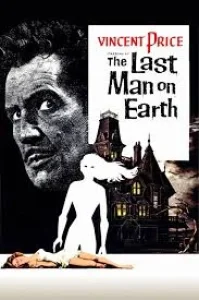The OG Apocalypse: How 'The Last Man on Earth' (1964) Defined Isolation, Undead Hordes, and Cult Classic Horror!
In the desolate wasteland of cinematic history, preceding the frenetic hordes of modern zombies and the sleek anxieties of contemporary pandemic thrillers, lies a stark, chilling masterpiece that quietly laid much of the genre's groundwork: The Last Man on Earth (1964). This profound and often overlooked gem stands as the first major adaptation of Richard Matheson's seminal 1954 novel, I Am Legend. While later versions would gain more widespread recognition, this low-budget, Italian-American co-production is crucial for understanding the genesis of the modern post-apocalyptic horror narrative. It dared to explore not just the terror of the undead, but the agonizing psychological toll of ultimate solitude, establishing a blueprint for survival horror long before the term existed. Its black-and-white cinematography and grim atmosphere captured a specific Cold War-era dread, ensuring its enduring legacy as a foundational cult film that quietly influenced countless apocalyptic narratives to follow, including George A. Romero's Night of the Living Dead.
The film plunges us into the utterly bleak, solitary existence of Dr. Robert Morgan (Vincent Price), who, through a stroke of inexplicable immunity, is seemingly the sole survivor of a devastating global plague that has transformed humanity into vampiric, zombie-like creatures. His days are a relentless, soul-crushing routine: meticulously scavenging for supplies, reinforcing his fortress-like home against the nightly onslaught of the infected, and, most horrifyingly, hunting down and staking the sleeping undead during the day, before burning their bodies in a massive pit. Morgan's life is a living hell, a cycle of survival and despair, haunted by flashbacks of his lost family and the gradual collapse of civilization. What makes his torment so palpable is not just the physical threat, but the profound, crushing weight of isolation and the realization that he is now a living ghost in a world of the undead, forever cut off from genuine human connection.
Under the direction of Sidney Salkow (credited for the English version, with Ubaldo Ragona for the Italian), The Last Man on Earth eschews overt gore for a slow-burn psychological terror that is deeply unsettling. The black-and-white cinematography perfectly enhances the film's oppressive, desolate atmosphere, making the empty streets and decaying remnants of civilization feel like a suffocating tomb. Price's performance is, as always, phenomenal; he carries the entire film on his shoulders, conveying Morgan's profound loneliness, his scientific dedication, and his barely suppressed rage with remarkable nuance. The film's ghoulish, shuffling "vampires" are less overtly monstrous and more tragically pathetic, adding a layer of melancholy to the horror. It’s a masterful exercise in tension, where the true horror lies not just in the creatures outside, but in the slow erosion of one man's sanity and humanity.
Despite its initial lukewarm reception and financial struggles, The Last Man on Earth has rightfully gained fervent cult status over the decades, revered for its bold adaptation of Matheson's novel and Vincent Price's iconic performance. It is often cited as a direct influence on the modern zombie genre, particularly for its depiction of a plague-ridden world overrun by the living dead. The film also features Franca Bettoia as Ruth, another survivor, adding a crucial dynamic to Morgan's isolated world, and Giacomo Rossi Stuart as Ben Cortman, a familiar face among the infected. It was originally distributed by American International Pictures (AIP). While often overshadowed by later, more star-studded adaptations, this 1964 version remains a raw, powerful, and deeply intelligent piece of science fiction horror, a chilling reminder that the most terrifying monster can sometimes be loneliness itself.
Director: Sidney Salkow and Ubaldo Ragona.
Cast: Vincent Price as Dr. Robert Morgan, Franca Bettoia as Ruth, and Giacomo Rossi Stuart as Ben Cortman.
Special Info/Trivia: This was the first film adaptation of Richard Matheson's influential 1954 novel, I Am Legend. The film is famous for influencing George A. Romero's Night of the Living Dead (1968), particularly in its portrayal of the plague victims and their slow, relentless pursuit. It was an Italian-American co-production and was shot in black and white, contributing to its stark, desolate atmosphere. Vincent Price himself considered this his favorite performance.

